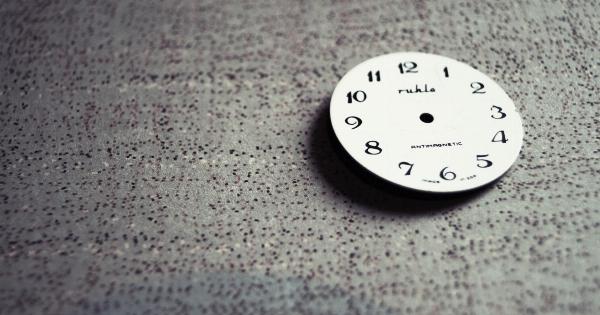Bone fractures and injuries have plagued humans for centuries, with limited options for effective treatment and healing.
However, modern medicine has made significant advancements in bone repair techniques, and one unconventional method has emerged as truly revolutionary – the use of eggs. Yes, you read that right! Eggs are no longer just a nutritious food source; they are now paving the way for a new era in bone repair.
Understanding Bone Repair
To understand how eggs contribute to bone repair, it’s crucial to comprehend the process of bone healing. When a bone breaks, the body initiates a complex series of events to repair the damage.
It starts with the formation of a blood clot, followed by the release of various cells and molecules that work together to rebuild the bone.
Traditionally, the most common method for bone repair is surgical intervention, where metal plates, pins, or screws are used to align and stabilize the fractured bone.
While this approach has proved successful, it often requires additional procedures and can be associated with complications such as infection or implant rejection.
Eggshell Membrane as a Biological Bandage
Researchers have turned their attention to eggshells, specifically the membrane that lines the inner surface of the shell, as a potential solution for bone repair.
This thin and flexible membrane contains numerous beneficial components that can facilitate the healing process.
Eggshell membranes are composed of fibrous proteins like collagen, elastin, and glycosaminoglycans, which possess remarkable biocompatibility and biomechanical properties.
Moreover, they are rich in naturally occurring growth factors like transforming growth factor-beta (TGF-β), which plays a critical role in bone regeneration.
When applied to a fractured bone, eggshell membrane acts as a biological bandage that protects the area, provides a scaffold for cellular invasion, and delivers growth factors directly to the site of injury.
This natural approach not only promotes faster healing but also reduces the risk of complications typically associated with surgery.
Enhancing Bone Regeneration with Eggshell Powder
While the eggshell membrane alone holds significant potential for bone repair, scientists have also focused on the eggshell itself.
Eggshells are composed primarily of calcium carbonate, which shares similar properties with the mineral component of bones. Researchers have developed innovative methods to convert eggshells into a fine powder that can be utilized to enhance bone regeneration.
By processing eggshells into a powder form, the calcium carbonate is made more accessible for the body to absorb and utilize. This powder acts as a supplementary source of calcium and promotes the growth of new bone tissue.
Additionally, it acts as a biocompatible scaffold, providing the necessary structure for cell attachment and proliferation.
The porous nature of eggshell powder allows for cellular invasion, facilitating the healing process. As the body’s own cells infiltrate the scaffold, they lay down new bone tissue, gradually replacing the powder over time.
This approach not only accelerates bone healing but also ensures that the regenerated bone is structurally sound and seamlessly integrated with the existing bone.
Advantages and Potential Applications
The use of eggs in bone repair offers numerous advantages over traditional methods. Firstly, eggs are widely available, cost-effective, and can be easily sourced.
This accessibility allows for broad implementation of egg-based approaches in bone repair procedures, benefiting a larger population.
Secondly, eggs are natural, biocompatible materials that do not trigger adverse immune responses.
Unlike synthetic materials, which may cause allergic reactions or rejection, egg-based solutions are well-tolerated by the body, minimizing the risk of complications.
Moreover, eggshell membranes and powder provide an environment rich in growth factors and essential minerals, promoting a more efficient and accelerated healing process.
These natural components stimulate cellular activities, enhance bone cell differentiation, and facilitate the formation of healthy bone tissue.
The potential applications of egg-based therapies in bone repair are vast. They can be utilized in various settings, including fractures, non-union fractures, bone defects, and even dental procedures.
Egg-based materials have shown promising results in both preclinical and clinical studies, laying the foundation for their future integration into mainstream orthopedic practice.
The Way Forward: Future Research and Development
While the use of eggs in bone repair has demonstrated remarkable potential, ongoing research is essential to further optimize and validate these techniques.
Scientists are currently exploring various avenues, such as modifying eggshell membranes to incorporate additional growth factors or combining eggshell powder with other biomaterials to enhance their regenerative capacity.
Furthermore, clinical trials involving larger patient populations are necessary to establish the efficacy and safety of egg-based therapies.
These trials will help refine treatment protocols, determine optimal dosage and application methods, and identify potential contraindications.
Conclusion
In conclusion, eggs have emerged as groundbreaking tools in the field of bone repair.
Their unique properties, such as the abundance of growth factors in eggshell membranes and the mineral composition in eggshell powder, make them invaluable for facilitating natural and accelerated bone healing. Harnessing the potential of eggs not only improves patient outcomes but also offers a cost-effective, widely available, and biocompatible alternative to traditional surgical methods.
As further research and development progress, it is only a matter of time before eggs become a staple in the world of orthopedics.






























